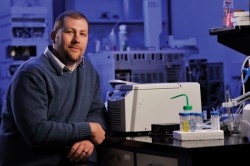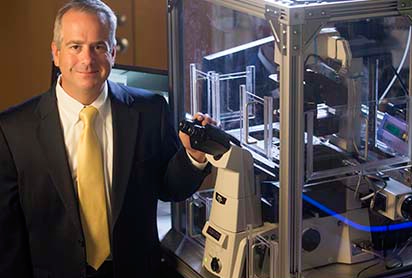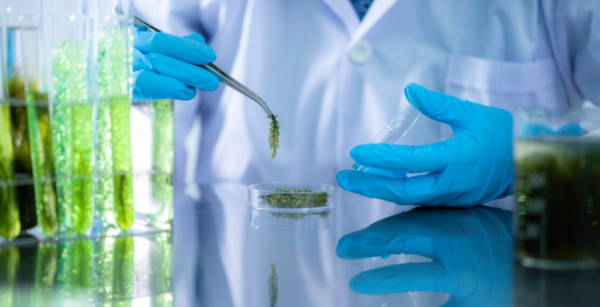THE IDEA
A team of Vanderbilt researchers led by Jamey Young, Cornelius Vanderbilt Professor of Engineering, John McLean, department chair and Stevenson Professor of Chemistry, and Carl Johnson, Cornelius Vanderbilt Professor of Biological Sciences, has described a novel method for rapidly characterizing the biological impact of genetic editing on bacteria. The new approach enables researchers to take the consequences of specific genetic edits into account as they engineer the production of specific chemicals from bacteria.

Ultimately the goal of this work is to discover the best way to genetically modify blue-green algae called cyanobacteria to produce fatty acid molecules that are used as a source of clean energy. Young led this component of the work. “The advanced analytical techniques developed in the McLean lab will enable our project team to rapidly engineer cyanobacteria and other microbes for high-yield production of medium-chain free fatty acids, which are readily converted into fuels,” he said.
“Rather than probing one gene edit, we are probing multiple bacterial strains with different gene edits to discern which are productive for what we want to accomplish—and to understand all the consequences of gene editing on the bacteria’s overall biology,” McLean said. “We can characterize many gene edits—or strains—in one experiment.”
WHY IT MATTERS
The research could lead to much shorter timeframes for green fuel production, drug discovery and the translation of research from the lab to the public in a variety of disciplines.
“The societal, environmental and economic benefits of this type of energy production are massive,” McLean said.
Further, the researchers were able to rapidly examine the consequences of gene editing on the target and on the complete biology of the organism, instead of the traditional examination of one molecule at a time. As a result, researchers can look at multiple gene edits at once, cutting down the time for synthetic experiments.
WHAT’S NEXT
“Imagine growing algae at your home in a resealable zipper storage bag that is really making fuel for your energy needs,” McLean said. “That is a very long-term outcome of this research, but we are one step closer toward optimizing how bacterial strains produce this kind of fuel.”

With expertise and access to myriad state-of-the-art microscopy instruments, McLean and his team are continuing to develop new approaches that enhance the technology’s performance and outputs.
FUNDING
This work was supported by U.S. Department of Energy, Office of Science, Biological and Environmental Research Division under award number DE-SC00019404 and the U.S. Department of Energy, Office of Science, Office of Biological and Environmental Research, Genomic Science Program under award number DE-SC0022207. Financial support for aspects of this research was also provided by the National Institutes of Health grants NIH NIGMS R01GM092218, NIGMS R37GM067152, NCI R03CA222-452-01 and NCI 1F32GM128344-01, the U.S. Environmental Protection Agency under Assistance Agreement 83573601, and the U.S. Army Research Office and the Defense Advanced Research Projects Agency under Cooperative Agreement W911 NF-14-2-0022.
With the McLean laboratory’s status as a Waters Center of Innovation, the team had access to instrumental and early-stage technology that made this work possible.
GO DEEPER
The article, “Accelerating Strain Phenotyping with Desorption Electrospray Ionization-Imaging Mass Spectrometry and Untargeted Analysis of Intact Microbial Colonies,” was published in the journal Proceedings of the National Academy of Sciences on Dec. 7.
The paper’s co-authors include Jody C. May, research assistant professor of chemistry, and Brian F. Pfleger, professor of chemical and biological engineering at University of Wisconsin–Madison. The paper’s first authors, Piyoosh Babele and Berkley M. Ellis, are graduate students in the Young and McLean labs, respectively.
